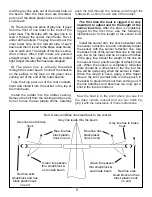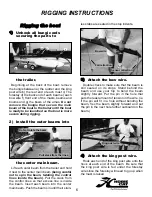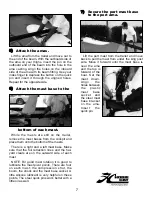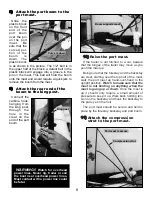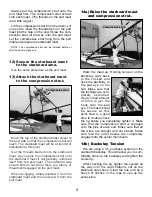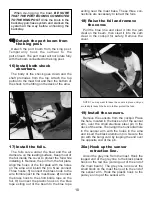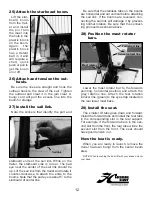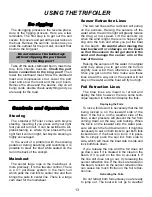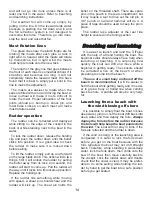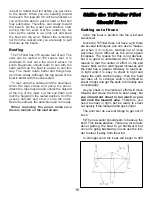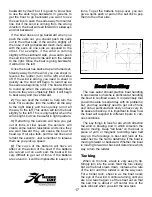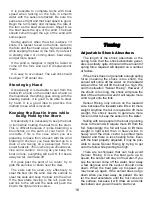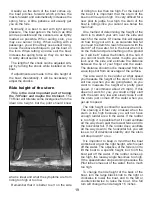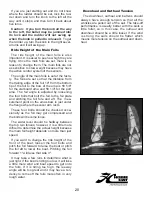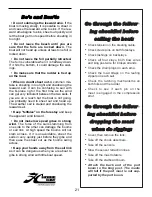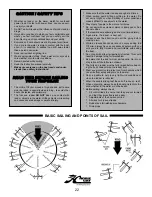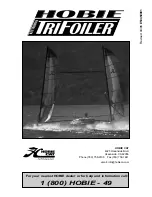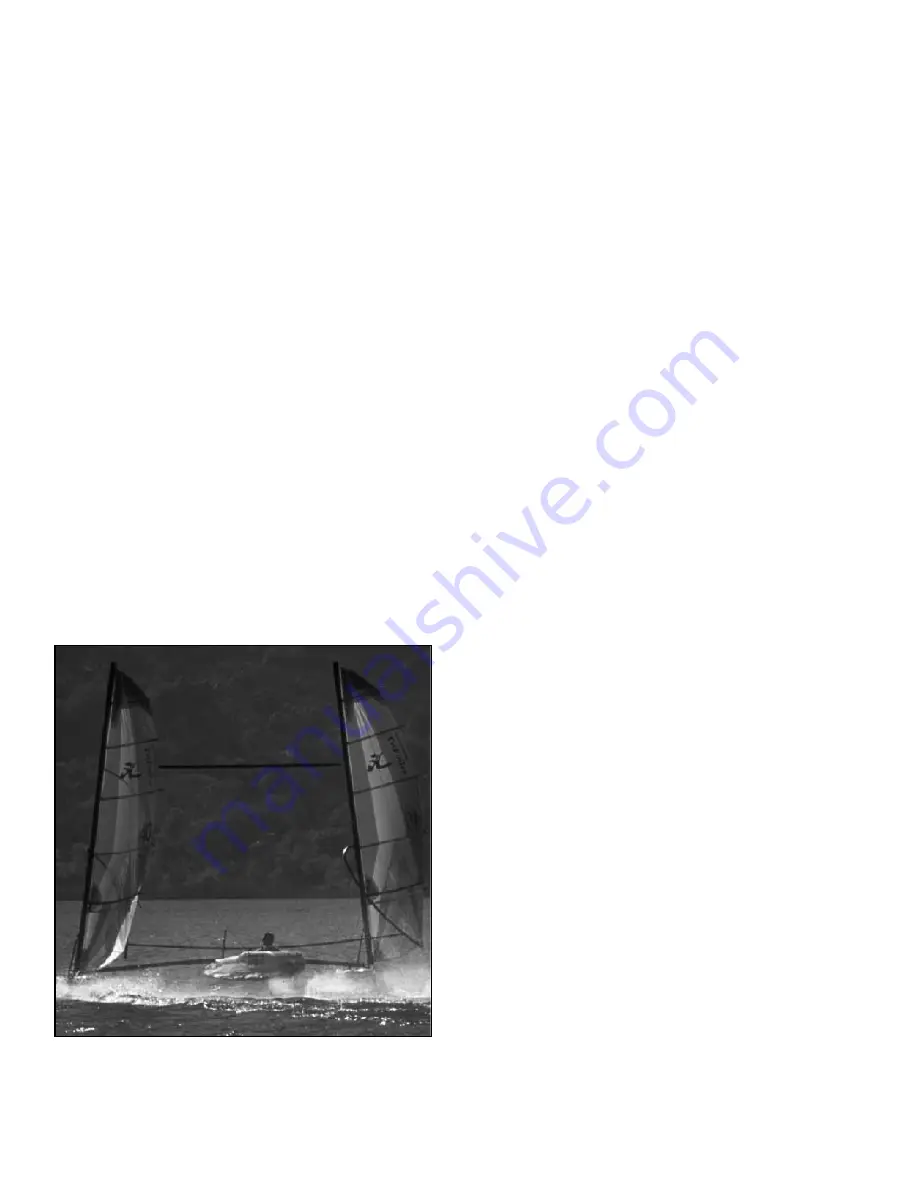
Usually, as the stern of the boat comes up,
the boat pitches forward which pitches the
masts forward and automatically increases the
spring force. A little patience will usually get
you on the foils.
Normally it is best to sail with light spring
pressure. The boat gets on the foils in as little
wind as possible and the sensors are as lightly
loaded as possible. When sailing solo, you
may see sensor rising. When sailing with a
passenger, you will routinely see sensor rising,
so use the above technique to get the boat on
the foils. When letting a novice sail the boat,
increase the spring force so they do not have
to worry about sensor rising.
The length of the shock can be adjusted sim-
ply by turning the shock while installed on the
boat.
If adjustments are made to the ride height of
the boat, theoretically, it will be necessary to
adjust the shocks.
Ride height of the stern
This is the most important part of tuning
the TriFoiler and maybe the trickiest.
The
TriFoiler will tolerate some divergence from the
ideal ride height, but the pilot should know
what is ideal and what the symptoms are from
riding too high or too low.
Remember that it is better to err on the side
of riding too low than too high. For the back of
the boat it is important that the stern of the
boat not ride up too high. It is very difficult for a
new pilot to judge how high the stern of the
boat is riding since you cannot see below the
main hull.
One method of determining the height of the
stern is to stretch your arm over the side and
reach for the water. Of course this will depend
on how long your arm is, so calculate how far
you need to stretch to reach the water with the
stern 8" off the water. Sit in the boat when it is
on the trailer and put something on the ground
so it will be 8” below the bottom of the hull. If
you cannot reach the water, maybe you can
look over the side and estimate the distance
between the tip of your finger and the water.
The distance should not be measured from the
wave tops but from an average of the surface.
You also want to be careful at what speed
you measure the height of the stern. The stern
will rise up when you are going faster, so you
want to measure the height at a pretty good
speed. (I recommend about 26 mph). If this
does not work for you, you could simply start
with the stern very low and slowly raise it until
the stern just comes off the water when you
get up to speed.
The ride height is critical for several reasons.
The steering will feel very unusual when the
stern is too high because you will not have
enough rudder area in the water. If the rudder
is too high it is possible that it could ventilate
all the way down past the lowest fence and to
the horizontal foil. If the rudder does ventilate
all the way down to the horizontal foil, you will
lose a lot of directional stability and the stern
will drop down 6" or so.
It is important to keep in mind that the boat
works best at just the right height, which is just
off the water. The objective of the foils is not to
lift the boat to a specific height, but to lift the
boat just off the water. If the rudder comes up
too high, the leeway angle becomes too high.
If the speedometer stops working because the
Pitot tube comes out of the water, that is much
too high.
To change the ride height of the back of the
boat, turn the large black knob to the right or
clockwise to lower the boat, and to the left or
counterclockwise to raise the boat. One full
turn will change the ride height 1.5 inches.
19
Содержание TriFoiler
Страница 1: ...ASSEMBLY MANUAL...

